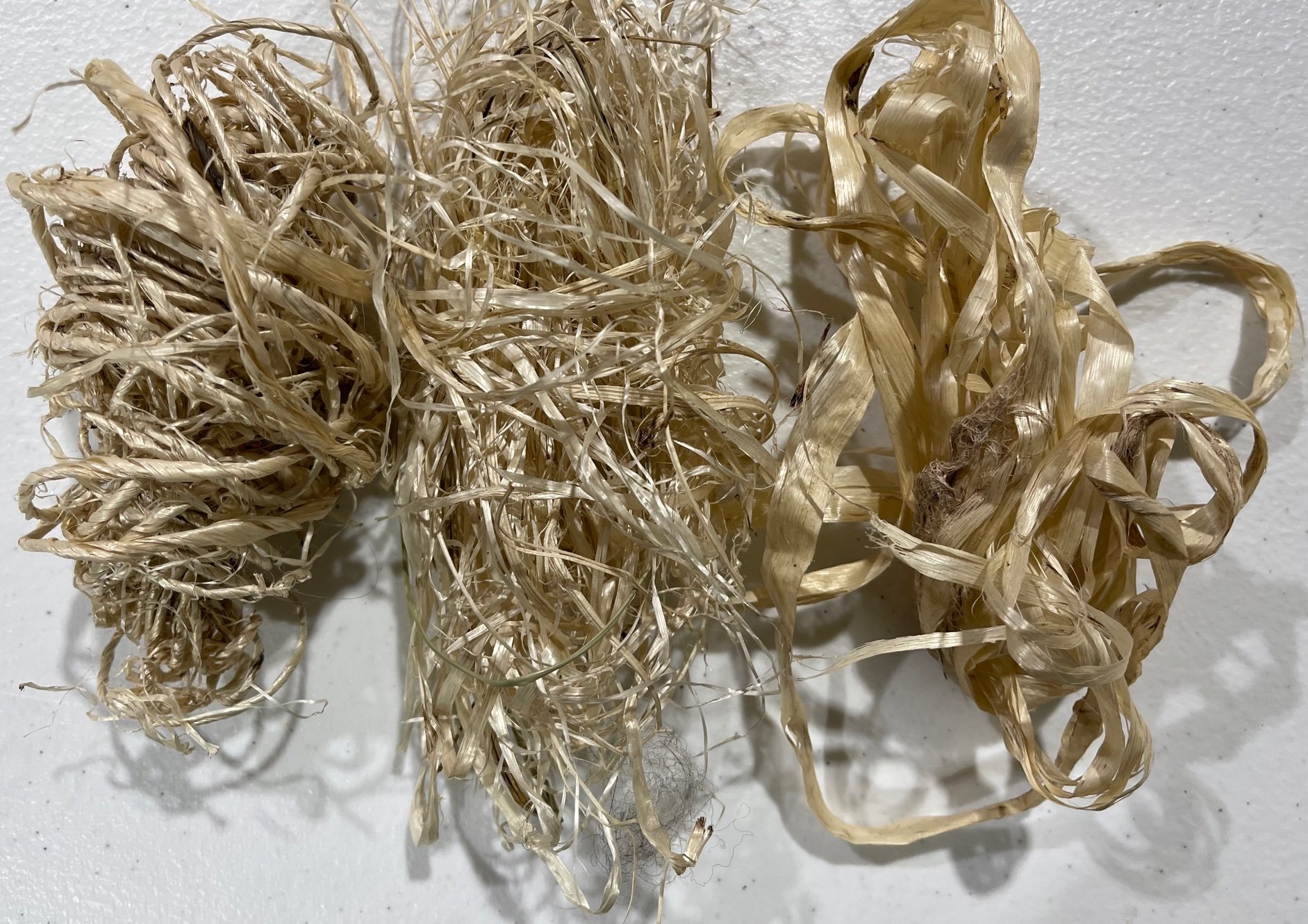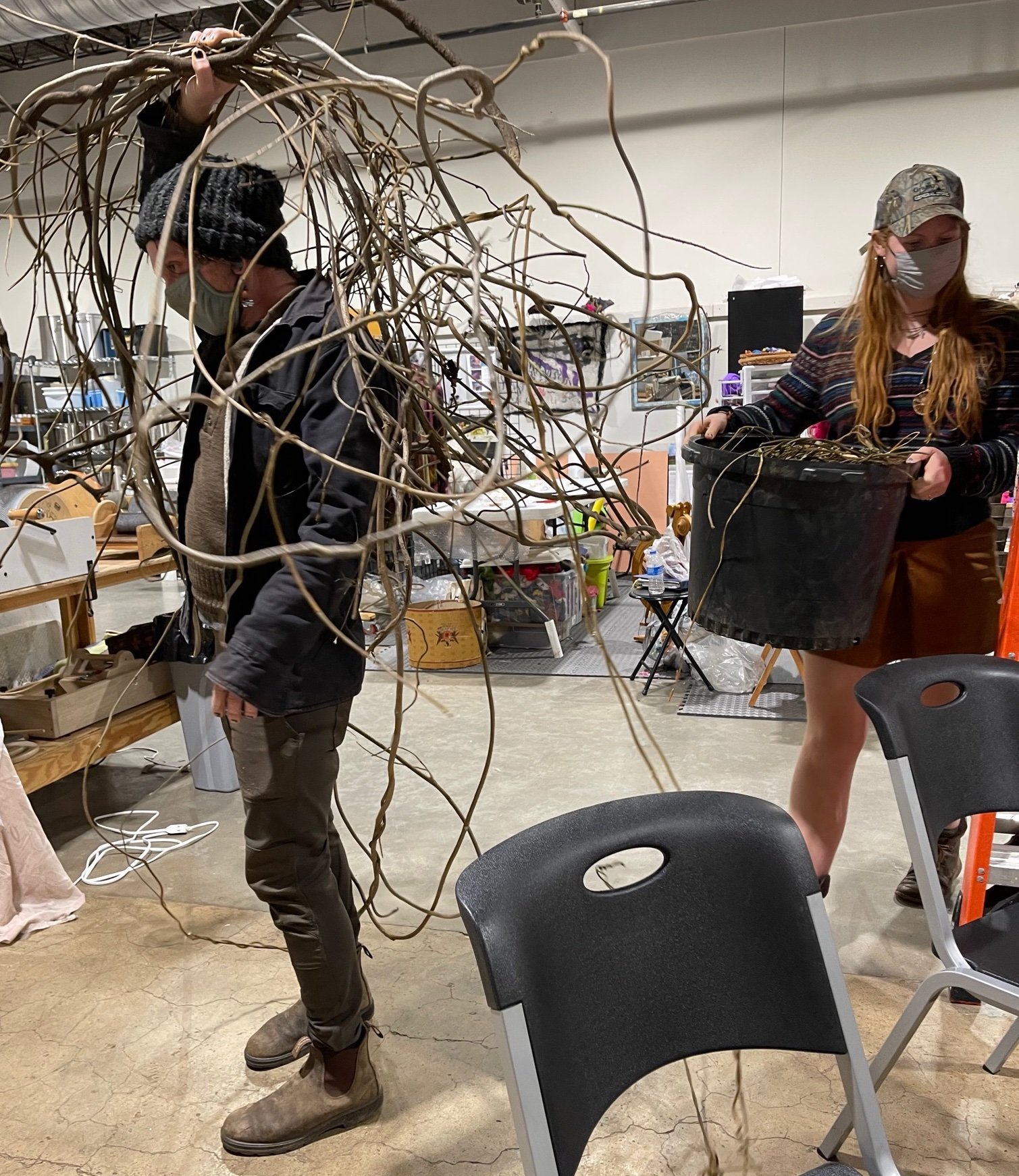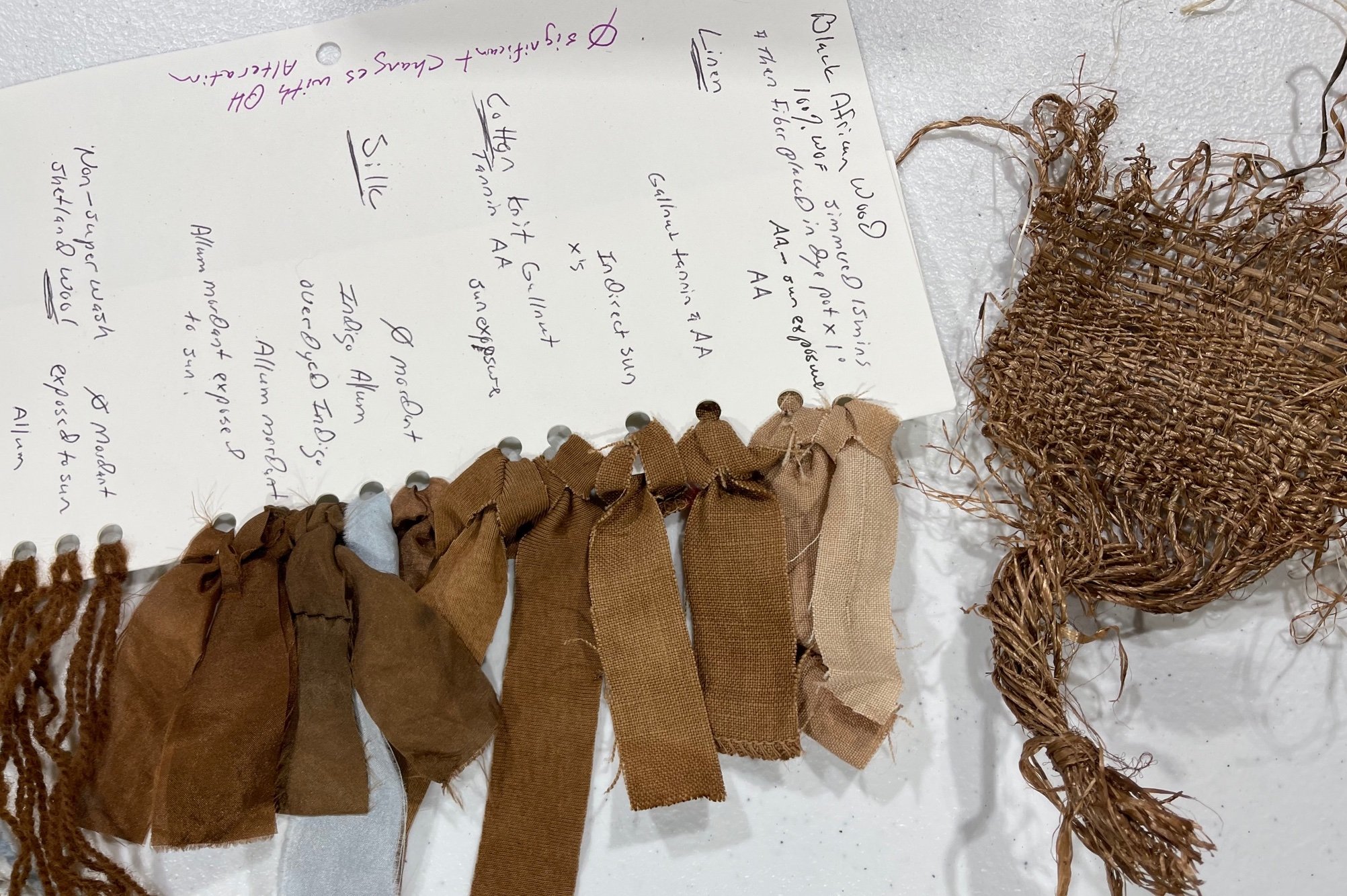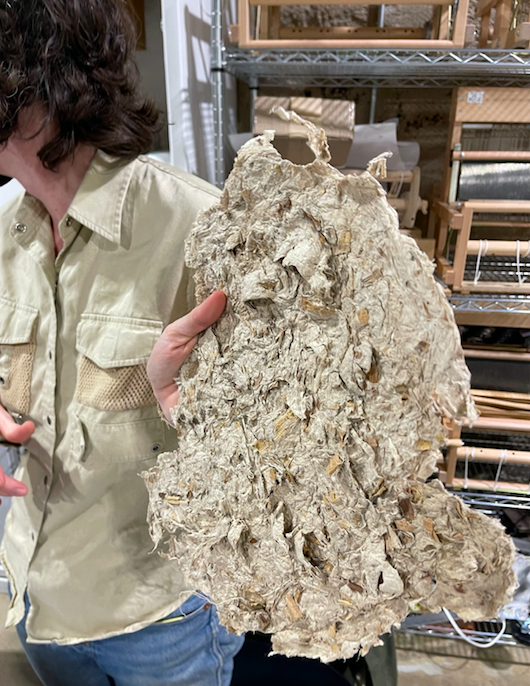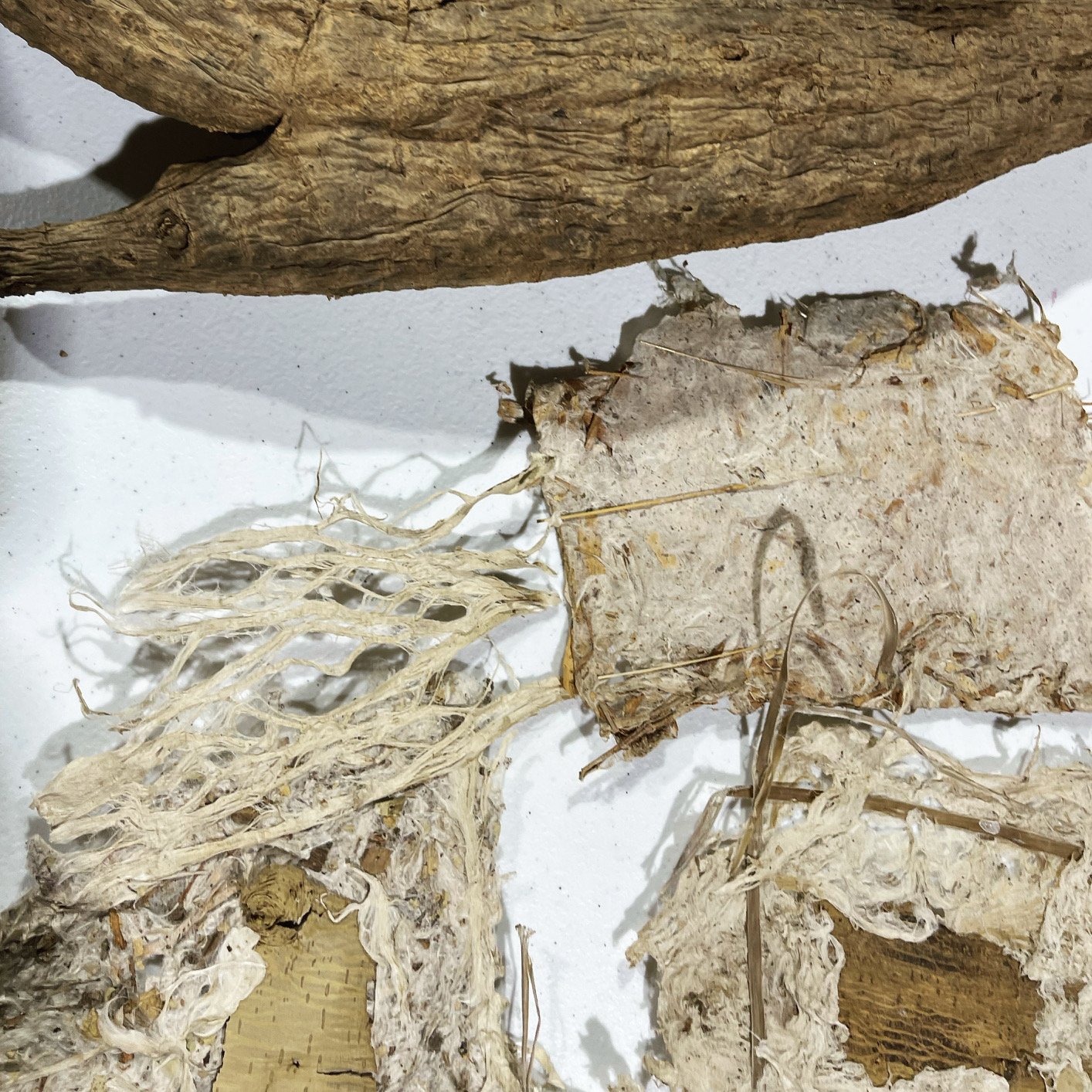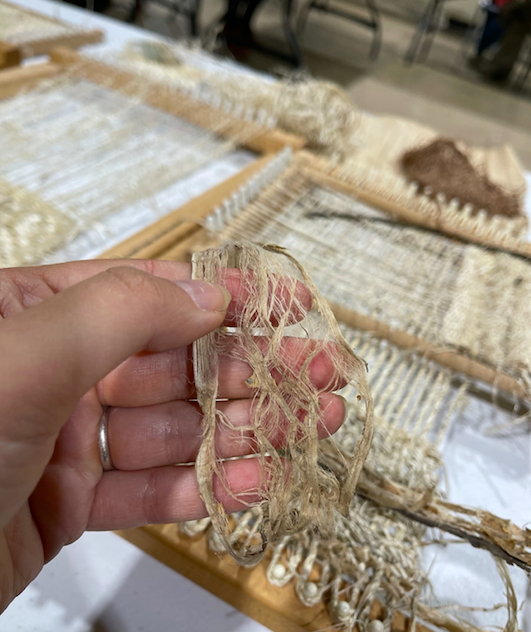After a deep dive during Vine to Cloth: Kudzu Camp this summer, we dreamed up a monthly study group where EVERYONE could continue sharing and making together.
“The future of restoration is in creating really high quality habitat and really functional ecosystems that support not only human life, but all non-human life.”
In our monthly Invasive Fiber Study group we will collaborate with regional ‘invasive’ (or highly abundant) plants from kudzu to knotweed. We want to rewrite the narrative and reframe these collaborators as partners, rather than enemies. We will reimagine over-abundant plants in our region as co-conspirators in the creation of cloth, natural dyes, building materials, home goods and paper.
Through our first-thursday-of-the-month meetings we hope to work as a collective to scale-up the retting, rinsing, and spinning/weaving process at the community level.
Our first meeting focused on retting and bast fiber processing. We discussed how temperature and humidity can effect retting times — but a 10-14 day retting window is a good place to start experimenting. We discussed creating an alkaline environment in your bucket/bin/container by adding wood ash left over from a fire or store bought baking soda.
We discussed the benefits of rinsing recently retted fiber in a creak or stream before drying/hackling/spinning the fiber. Dew retting is another option and you can incorporate another misunderstood ‘invasive’ plant of Western North Carolina — miscanthus grass — in this retting technique. You can also more carefully monitor the retting process with this method because your vines are not submerged in water.
The best time to forage for kudzu vine for fiber is late summer into early fall, when the first year of growth is not yet woody. A pencil thickness is a good guide. You can strip the leaves and save them for animal fodder.
separating the bast fiber from the core of retted kudzu vine
LB lead a demo on separating the bast fiber from the ‘core’ of the retted kudzu vine and discussed an alternative process of smashing (a similar technique is used throughout the world in the making of sacred bark cloth) the root or vine to create a paper-like material.
DECEMBER COLLECTIVE INQUIRY:
This month we are asking ourselves to create a basket from locally foraged abundant plants for next month’s meeting (Thursday, January 6).
In our backyard in WNC that means kudzu, oriental bittersweet, grapevine, and wisteria. This time of year the vines get woody as the temperatures cool down, and we look forward to learning and unlearning together while trying our hands at basketry for the first time.
See you in the weeds,
x Nica

